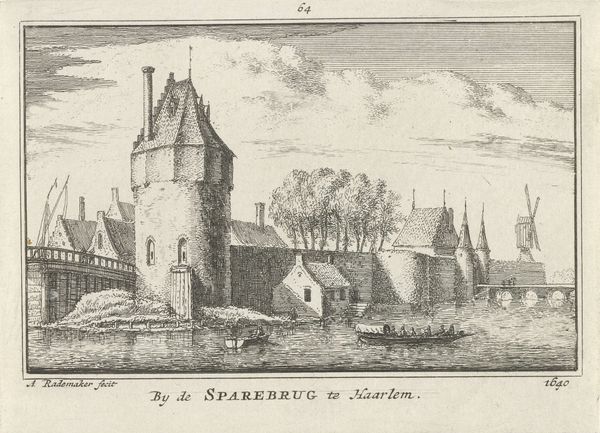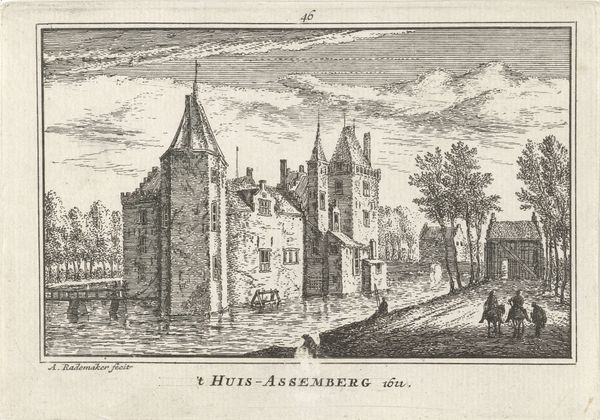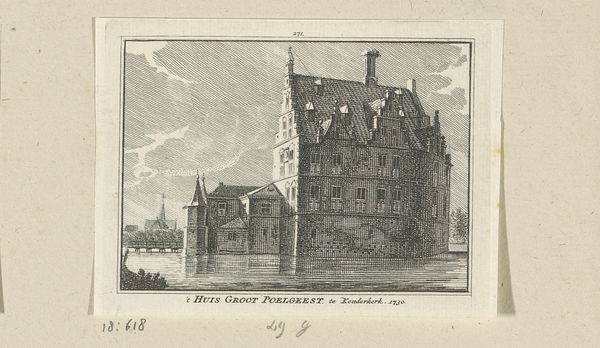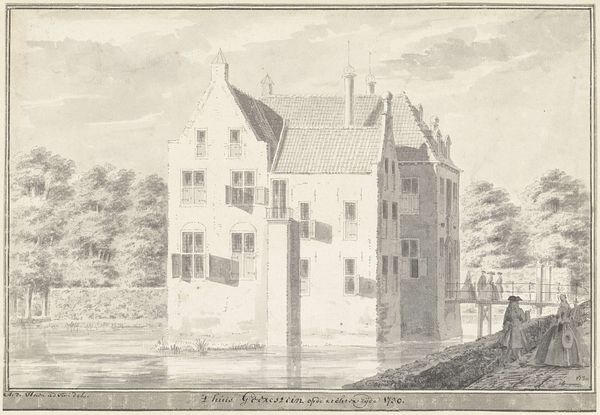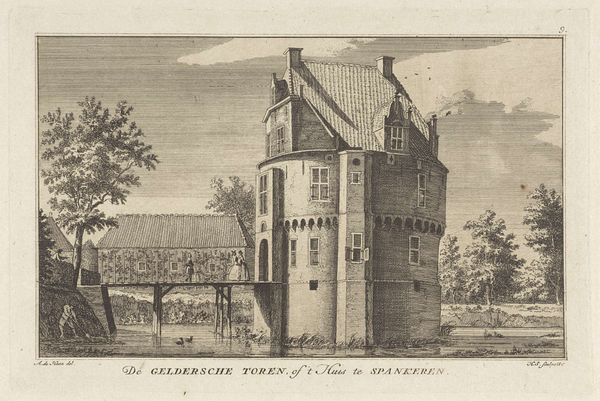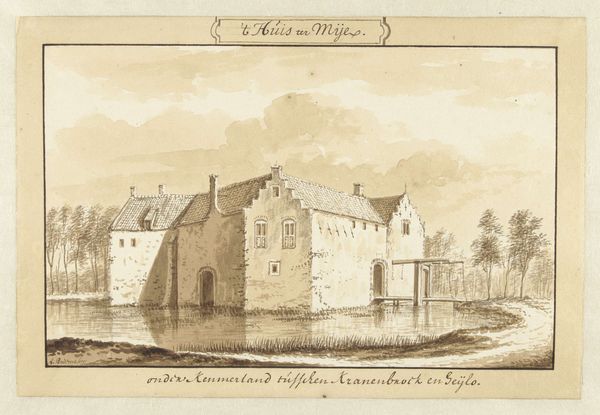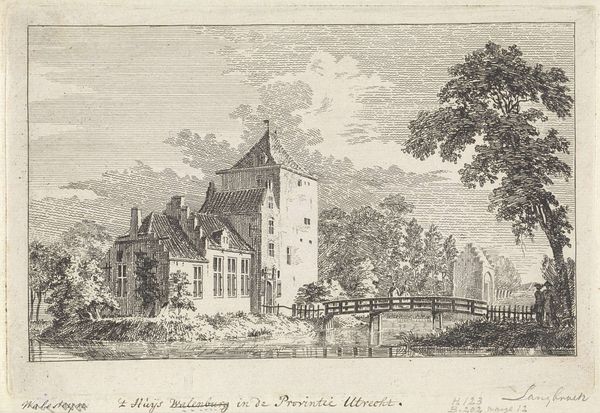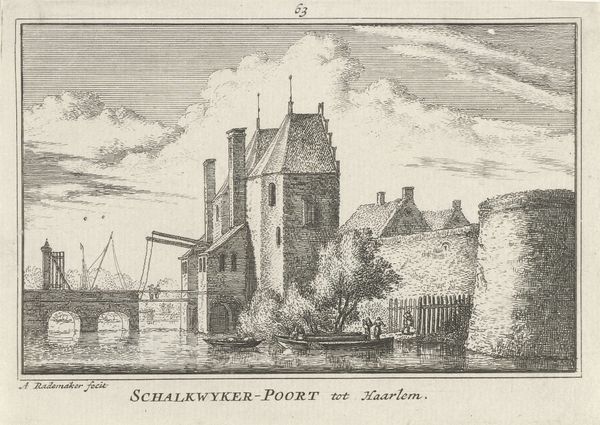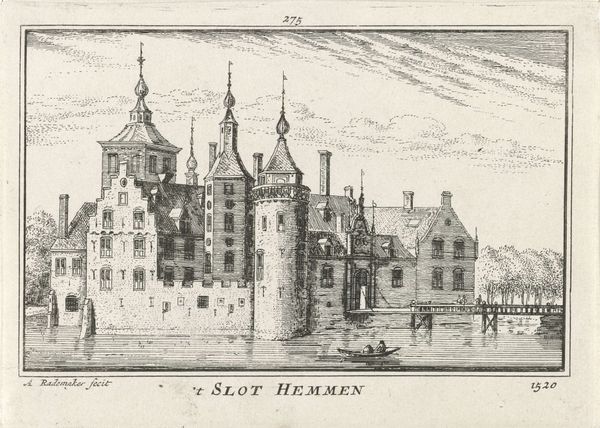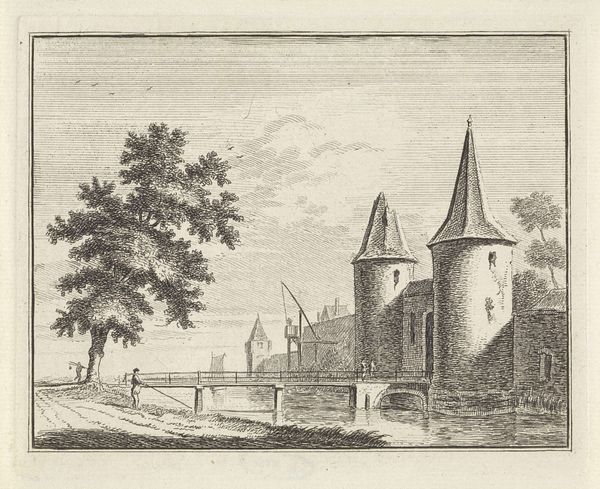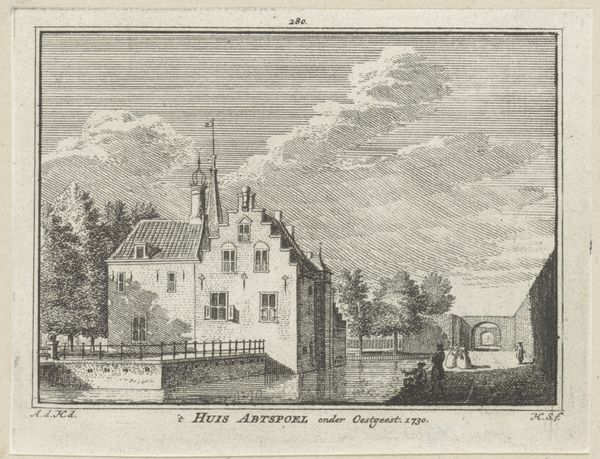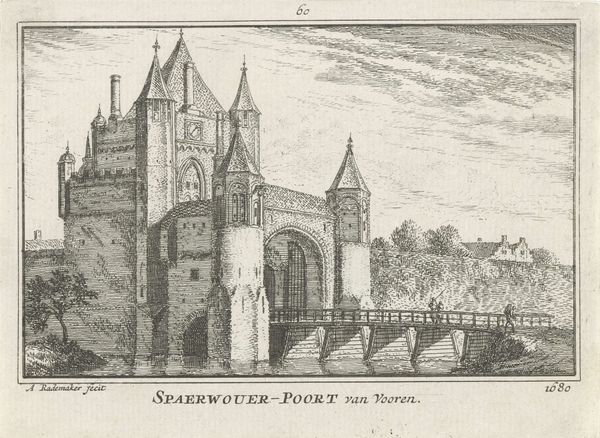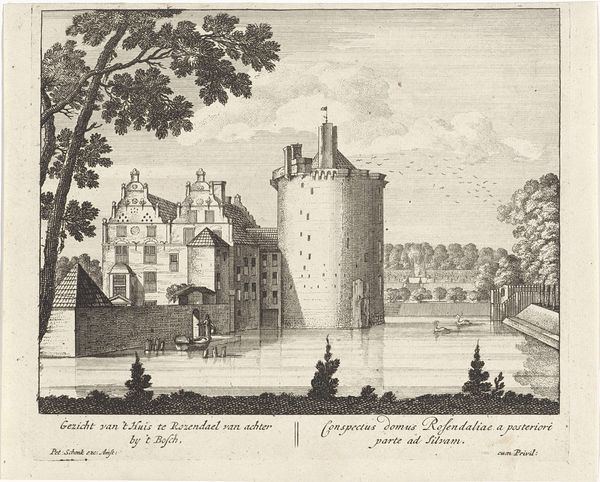
engraving
#
dutch-golden-age
#
landscape
#
cityscape
#
engraving
Dimensions: height 80 mm, width 115 mm
Copyright: Rijks Museum: Open Domain
Curator: Here we have Abraham Rademaker's "Gezicht op de Catharijnetorens te Haarlem," created between 1727 and 1733, held here at the Rijksmuseum. The engraving depicts a tranquil cityscape scene. Editor: It's incredibly detailed. The line work is so fine, creating subtle tonal variations. It projects a feeling of quiet industry. The stark geometric forms against the slightly turbulent water fascinate me. Curator: Rademaker, while recognized as an artist, functioned primarily as a topographer and publisher. His prints like this were integral to shaping the visual culture of the Dutch Golden Age, acting as early forms of mass media to circulate images of the Dutch landscape and its architectural achievements. Consider the role of engraving here: a reproducible medium that democratized access to these landscapes. Editor: I agree. And look how the engraving technique itself, the repetitive, almost mechanical process, mirrors the societal structure of the time – the emerging merchant class and their disciplined labor, visible in everything. The way Rademaker constructs this reality, line by line, defines its material nature. Notice also, the placement of the towers. Curator: Precisely! It's not just a representation; it's a constructed vision tied to societal needs. The composition guides your eye and creates a carefully composed image of a working city. He understood the appeal of the ordered Dutch landscape as both subject and object. Editor: Yet, the formal balance achieved, how the darker, weighty forms on either side anchor the open sky in the middle, conveys serenity in a dynamic time. The interplay creates a complex vision, visually arresting but conceptually nuanced. Curator: It makes me consider the economics of art in the 18th Century—how the process and the accessibility of his works catered to a wider market of middle-class citizens and influenced how people viewed their towns and homeland. Editor: Yes, quite fascinating to think of all the angles within and how Rademaker pulls it together, a coherent composition that has great lasting value. Curator: I hadn't considered the piece so holistically until now. Thank you for expanding my thinking. Editor: Likewise, diving into the circumstances behind this art gives such great substance and brings this static piece of material to life.
Comments
No comments
Be the first to comment and join the conversation on the ultimate creative platform.
